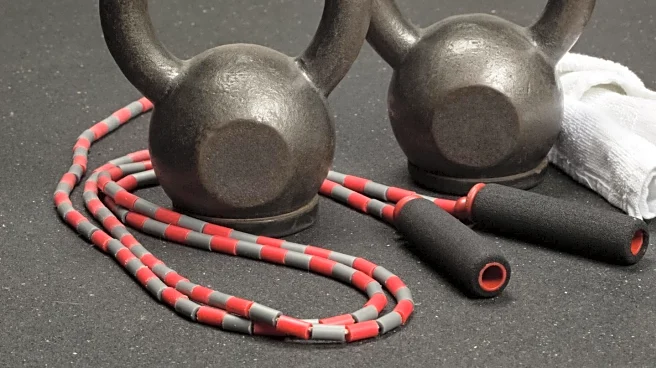What's Happening?
Recent research highlights the significant health benefits of high-intensity interval training (HIIT) for sedentary individuals aged 50 to 60. The study involved participants engaging in a HIIT regimen for 30 minutes per day, four to five days a week, over two years. Results showed that these individuals experienced improvements in heart function and structure, comparable to those of people 20 years younger. HIIT involves alternating periods of intense activity with recovery, making it accessible and effective for most adults, even those previously inactive. The study underscores the potential of structured, high-intensity exercise to reverse heart aging and enhance cardiovascular fitness.
Why It's Important?
Heart disease remains the leading cause of mortality in the United States, making heart health a critical concern. The study's findings suggest that HIIT can significantly improve heart health, offering a time-efficient alternative to traditional moderate-intensity workouts. This could lead to widespread adoption of HIIT among aging adults, potentially reducing healthcare costs and improving quality of life. The ability to rejuvenate heart function through exercise may also encourage more individuals to transition from sedentary lifestyles to active ones, impacting public health positively.
What's Next?
As awareness of HIIT's benefits grows, fitness programs and healthcare providers may increasingly recommend this form of exercise to aging populations. Future research could explore the long-term effects of HIIT on other health metrics and its applicability to different age groups. Additionally, fitness centers might develop tailored HIIT programs to accommodate varying fitness levels, ensuring safe and effective workouts for beginners and advanced participants alike.
Beyond the Headlines
The study raises ethical considerations regarding access to fitness resources and education for all demographics. Ensuring equitable access to exercise programs and facilities could be crucial in addressing health disparities. Moreover, the cultural shift towards prioritizing fitness in older age could influence societal norms around aging and health, promoting a more active lifestyle as a standard for longevity.










